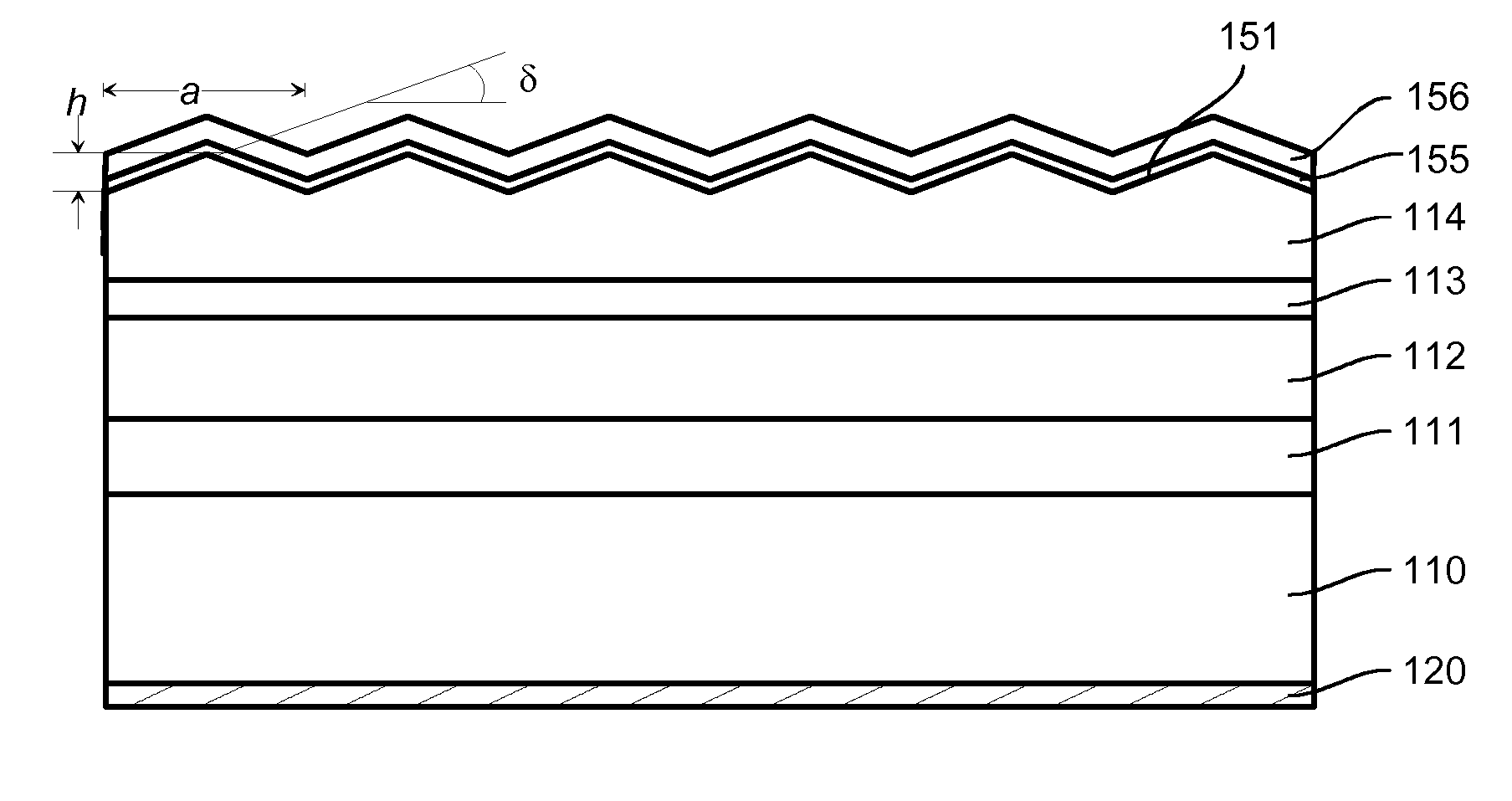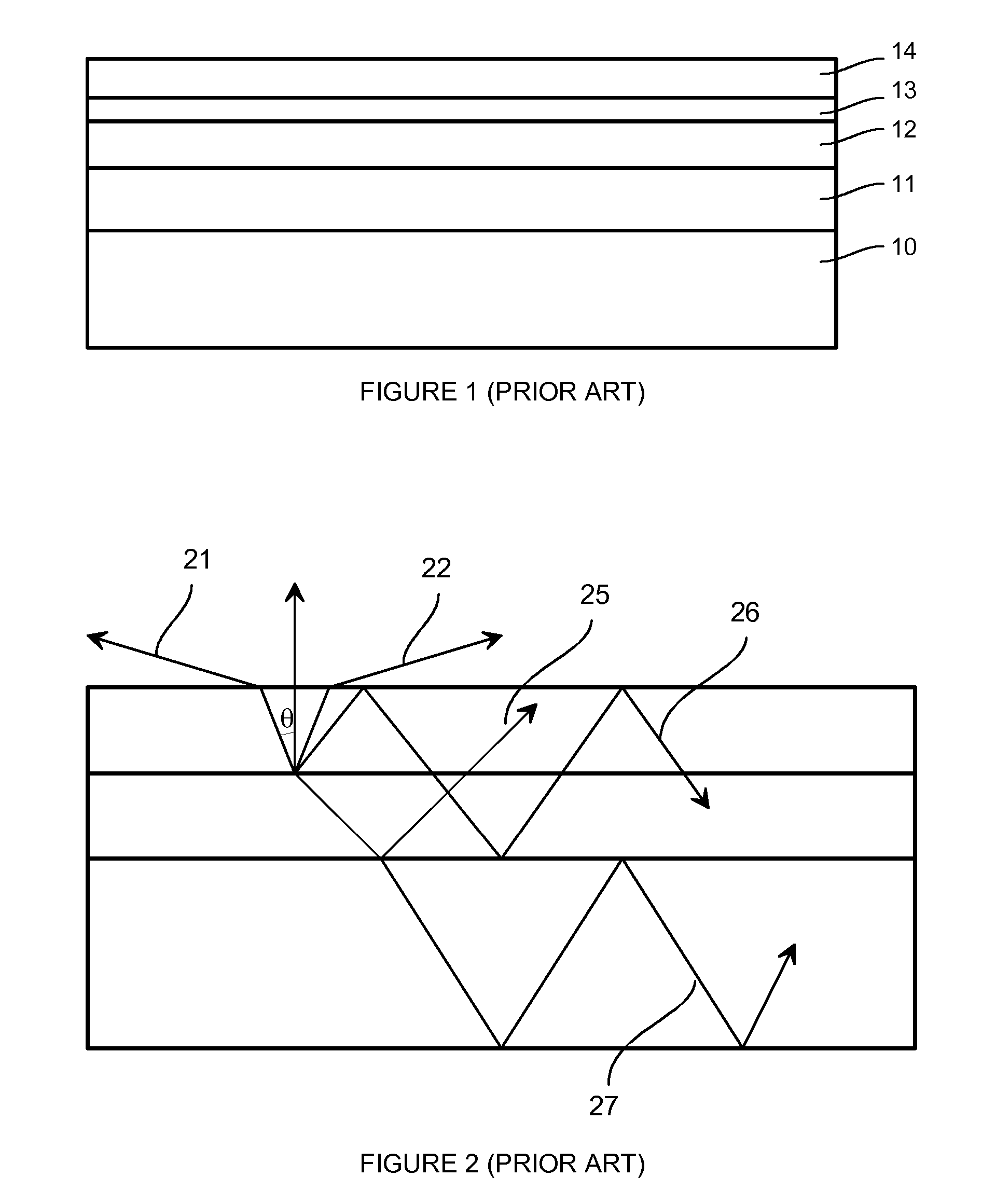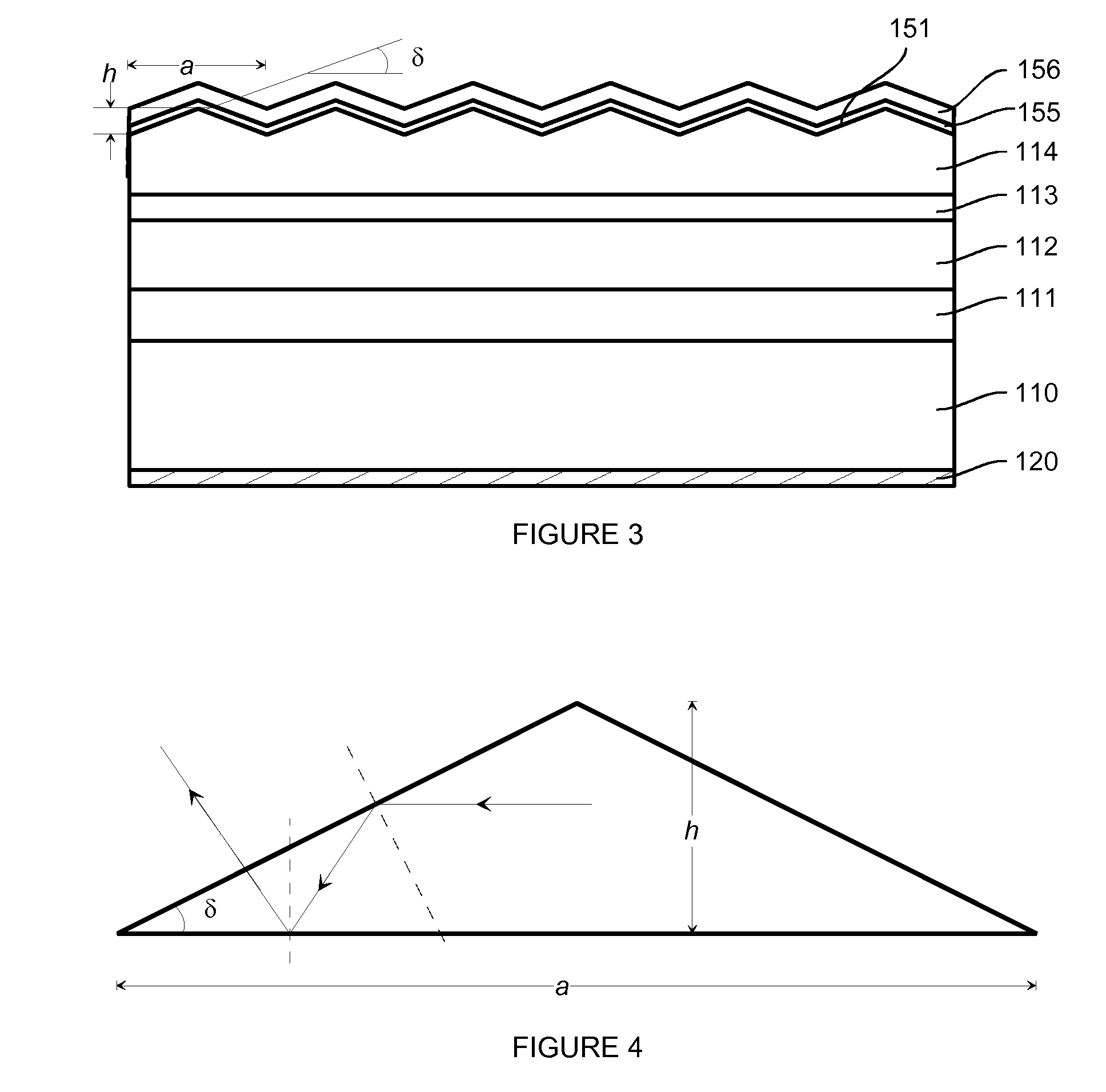Methods of Manufacturing Light Emitting Devices
a technology of light-emitting devices and manufacturing methods, which is applied in the direction of semiconductor devices, basic electric elements, electrical appliances, etc., can solve the problems of mechanical damage and adhesion problems, the difficulty of achieving the effect of two or more factors in improving the lee, and the difficulty of achieving the effect of reducing manufacturing costs, improving yield, and improving light extraction
- Summary
- Abstract
- Description
- Claims
- Application Information
AI Technical Summary
Benefits of technology
Problems solved by technology
Method used
Image
Examples
examples
[0045] Some exemplary manufacturing techniques for some embodiments of the present invention will now be described to enable those skilled in the art to readily adapt the teachings of the present invention into a multiplicity of alternative material combinations and known processing techniques.
[0046] InAlGaN p-up LED on sapphire, First Embodiment: [0047] 1) Epi growth using Metal Organic Chemical Vapor Phase Deposition (MOCVD): [0048] a) Start with sapphire substrate, 110. [0049] b) Grow nucleation layer, GaN or AlN, or multilayer of InAlGaN / GaN, 10 to 100 nm thick. [0050] c) Grow a thick GaN buffer layer, 111, 0.5 to 5 μm, undoped or lightly doped with Si. [0051] d) Grow n-type GaN, 112, 0.5-5 μm, doped with Si. [0052] e) Grow InGaN / GaN multiple quantum wells (MQW) as the active region, 113, for light emission, 2 to 20 pairs, InGaN quantum wells (QW) are ˜2-4 nm thick, indium composition is controlled by growth temperature and trimethylindium flow rate to achieve targeted emission...
PUM
 Login to View More
Login to View More Abstract
Description
Claims
Application Information
 Login to View More
Login to View More - R&D
- Intellectual Property
- Life Sciences
- Materials
- Tech Scout
- Unparalleled Data Quality
- Higher Quality Content
- 60% Fewer Hallucinations
Browse by: Latest US Patents, China's latest patents, Technical Efficacy Thesaurus, Application Domain, Technology Topic, Popular Technical Reports.
© 2025 PatSnap. All rights reserved.Legal|Privacy policy|Modern Slavery Act Transparency Statement|Sitemap|About US| Contact US: help@patsnap.com



